Interest in ley lines, earth mysteries and energy spots has been evident in the West ever since the 1960s, and hundreds of thousands of people are drawn each year to ancient megaliths like Stonehenge and Avebury. Japan too is rich in such sites but relatively little attention has been paid to them. Now, according to Kara Yamaguchi, an Australian of Japanese descent, that might be changing. She’s organising the first ‘power spot’ tours of Japan for foreigners and hoping to raise awareness of the remarkable ancient heritage of the country. Recently I was lucky to meet up with her in the Falafel cafe in north Kyoto (noted for its ‘good energy’) and had a chance to talk to her about this fascinating subject.
++++++++++++++++++++++++++++++++++++++++
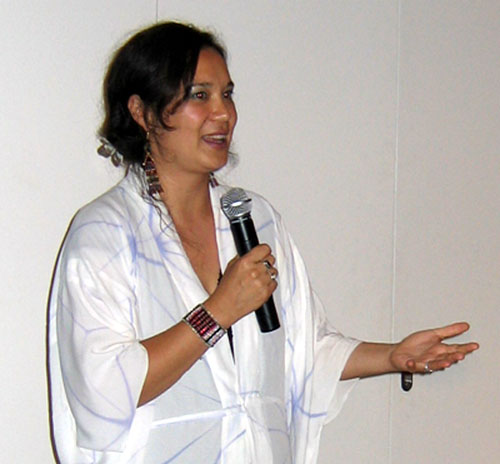
Kara Yamaguchi, talking to the Japan Foundation, Sydney
Can you explain to readers what you are doing at present?
For the last 15 years I have travelled across Japan researching and documenting what is believed to be a lost civilization [called Mu] which once existed across Japan during the Jomon Period (14,000BC-300BC). The possibility of such a civilization came into question with the discovery of a massive stone monument in 1986 off the shores of Yonaguni, one of Okinawa’s southernmost islands.
The monument still has researchers baffled as the last time it would have been on land was during the last Ice Age, but our history books show no records of any advanced civilization existing as far back as 10,000 BC. What I was astounded to discover from my own personal research is that the Yonaguni monument is not an isolated ruin, but in fact is part of a trail of similar ruins on land which extend from the islands of Okinawa to Hokkaido.
Anyone coming into contact with these ruins is left awestruck and baffled at the same time, as it is impossible to comprehend how ancient stone temples and megaliths weighing hundreds of tons could have somehow landed across the islands of Japan. What is more exciting is to realize is that these megaliths and ruins form part of an ancient network which may indeed connect around the globe, and their sheer scale testifies to the existence of civilizations that may have been more advanced than our own today.
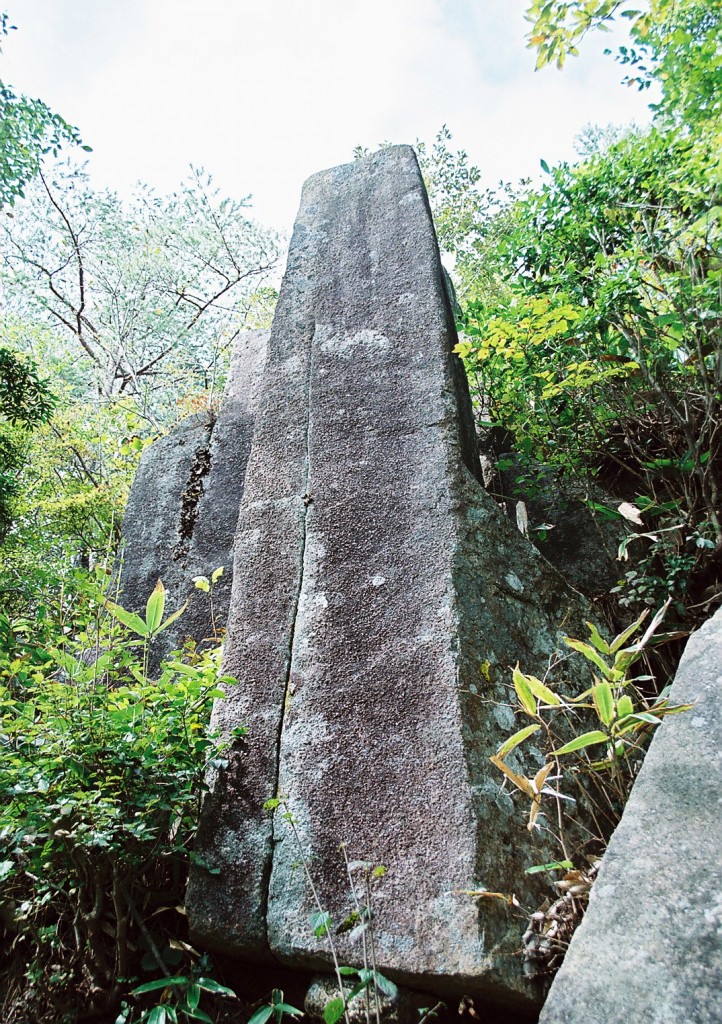
Jinbugan rock in Hiroshima Prefecture (courtesy Yamaguchi)
I am not trained as an archeologist, but as a photographer and seeker of the true records of our history on earth, I have dedicated the last 15 years of my life to collecting a photographic record of these ruins so that the world may know of one of Japan’s most captivating mysteries. While a small part of the population in Japan is aware of the existence of these ruins, there is a lack of information in English, so that’s what inspired me to start this project. While authorities continue to deny that our history books need revision, the true records have made an impressive impact in recent years and a newly informed public may be able to make up their own minds now!
How did you come to be interested in that?
I first saw the Yonaguni underwater monument 20 years ago, and the instant I saw it from a glass bottom boat I knew our history books are not correct. The impact of seeing the structure is like a jolt to some ancient memory you have within but which is forgotten.
After that initial discovery I started work on a project to photograph ancient Shinto sacred sites across Japan, but every time I went to these places I would stumble across ruins that reminded me of the Yonaguni structure. It certainly did not fit in with the chronology of history as I had been taught it. So my focus shifted to documenting these lost ancient ruins, not only as a record for the Japanese but as part of the legacy of world history.
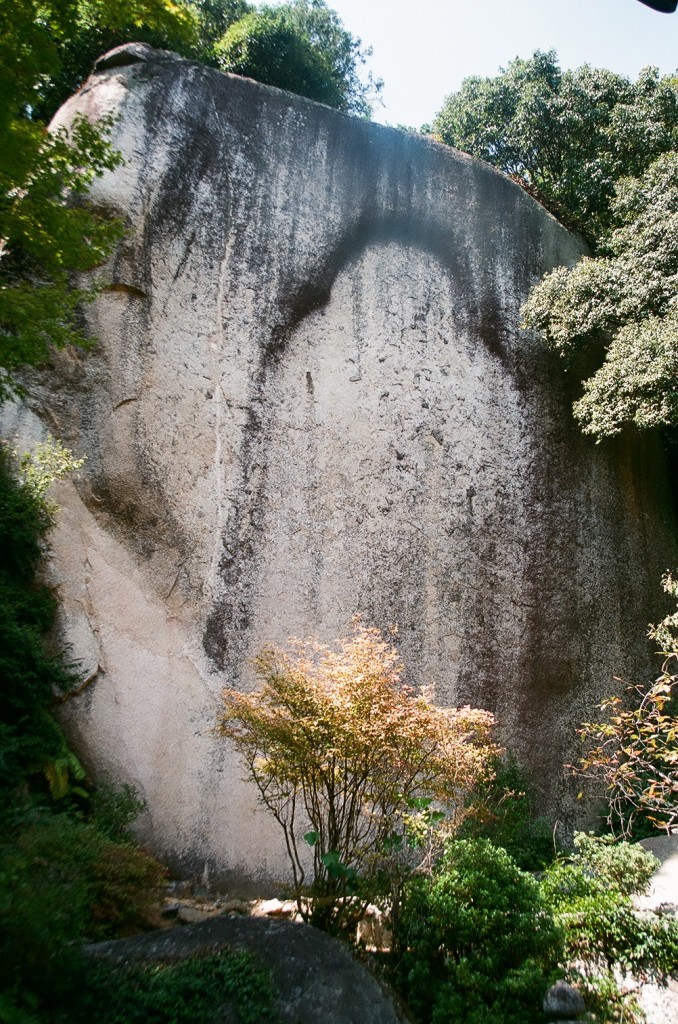
Kasagiyama rock in Kyoto Prefecture (coutesy Yamaguchi)
What are some of the most interesting discoveries you have made?
What has interested me most about these megalithic ruins is that people often experience dramatic transformations after visiting them. I know personally that my own consciousness has changed after spending so much time at these ancient sacred sites, and I believe they are portals which connect with higher dimensions of energy which the ancients somehow knew how to access. That is why we lovingly call these places ” power spots”!
People sense some invisible power or energy at these places, and judging from Japan’s recent ‘power boom’ I sense that something in the Japanese psyche has been awakened in recent years. Often when I have taken photos at ancient sites beautiful rainbow light or other energy has appeared in the photo, alerting me to other hidden worlds that we don’t necessarily see with the naked eye.
How do you see the role of Shinto with regard to earth energies?
No one seems to know where Shinto first came from, but I have felt many times that the the true roots of Shinto are connected to an advanced civilization which existed across Japan during the Jomon Period. People who have researched into the network of megaliths and ruins have determined that many of them are built on ley lines and are aligned with constellations in the sky, just like other megalithic structures across the planet.
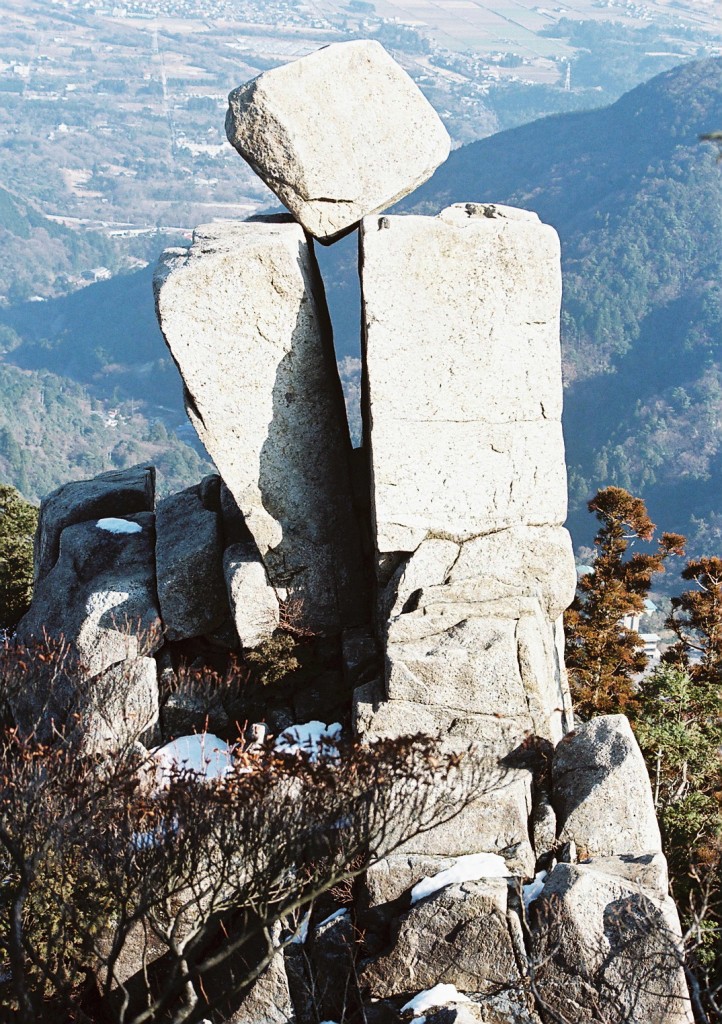
Jizoiwa in Mie Prefecture (courtesy Yamaguchi)
How did supposedly primitive people have such an accurate knowledge of the night skies, and how on earth did they lift stone structures which would prove difficult even for our technology today? The same question surfaces when you look at other famous structures such as those at Stonehenge or Easter Island. If we can find the answers to these puzzles, I believe we will be able to tap into an ancient wisdom which holds the key to protecting our earth and ensuring that it has a safe passage into the next millennium.
How do you see Shinto in terms of neo-paganism in the West or the aboriginal culture of Australia?
Coming from Australia I have long held an interest in and love of Aboriginal culture, and while there are certainly differences in ritual and ancestral worship from Shinto spiritual practice, for me personally it is the same universal message that is being handed down to us from our ancestors.
I have always loved the mythology of ancient people, so it is interesting to see the same ideas arise about a lost Motherland and of ancestors who visited the earth from the stars. While we easily dismiss these stories as fanciful or primitive, with careful research and examination of ancient ruins across the planet, you begin to realize that our present world lies asleep to the truth, but that we could be on the verge of a truly remarkable awakening. In this sense I see that all the ancient messages left to us by our ancestors, whether they be Shinto, Aboriginal or from any other pagan tradition, carry the same roots. In returning to them, we may stand at the dawn of an exciting new age.
What are your plans or hopes for the future?
I remember looking at my dad’s old National Geographic magazines as a kid and thinking just how amazing this planet is. Not bad for a four-year old!
So it is very distressing to look at where we are now some 40 years on. I am not a pessimist, far from it! But I sense the clock is ticking madly past the 11th hour, so it is my hope to continue connecting people to the sacred world of ancient Japan which I believe holds vital keys to our survival. Again and again, I have seen groups of people transformed as they stand in awe before stunning megalithic structures across Japan that seem to be the keepers of some ancient truth we are now ready to rediscover.
I have yet to meet anyone who is not changed or moved at a very deep level when they visit Japan. It is hard to put into words what it is that they experience, but I see it is an invisible world which still exists through the Shinto spirit and is destined to bring great change across the planet!
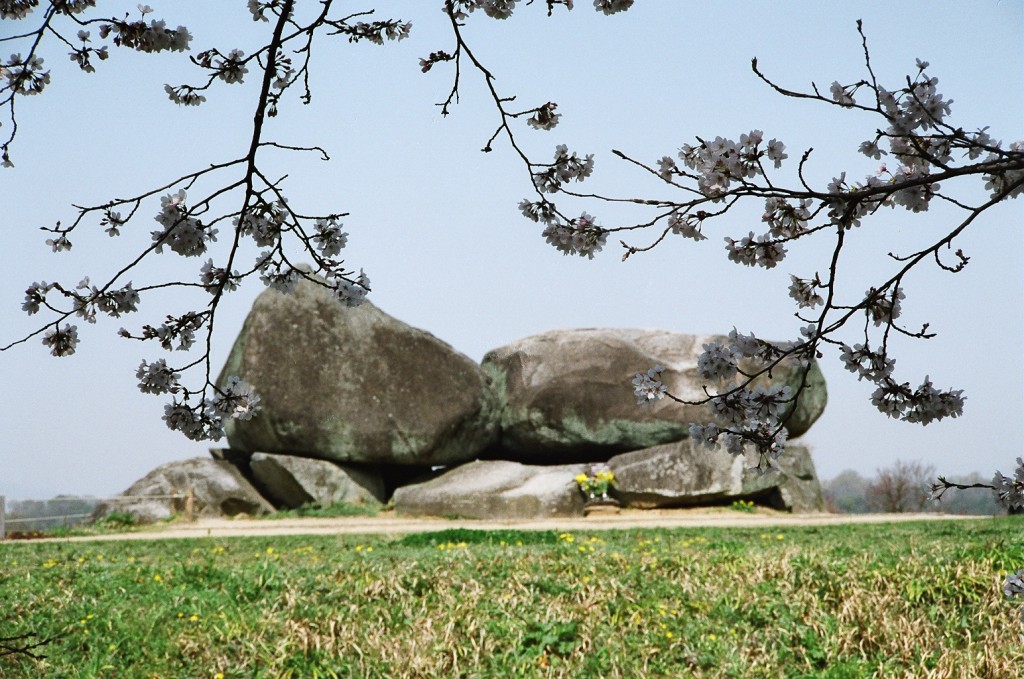
Ishibutai in Nara Prefecture (courtesy Yamaguchi)

Oyuu stone circle in Akita Prefecture (courtesy Yamaguchi)

Arrangement of rocks in Kochi Prefedture (courtesy Yamaguchi)
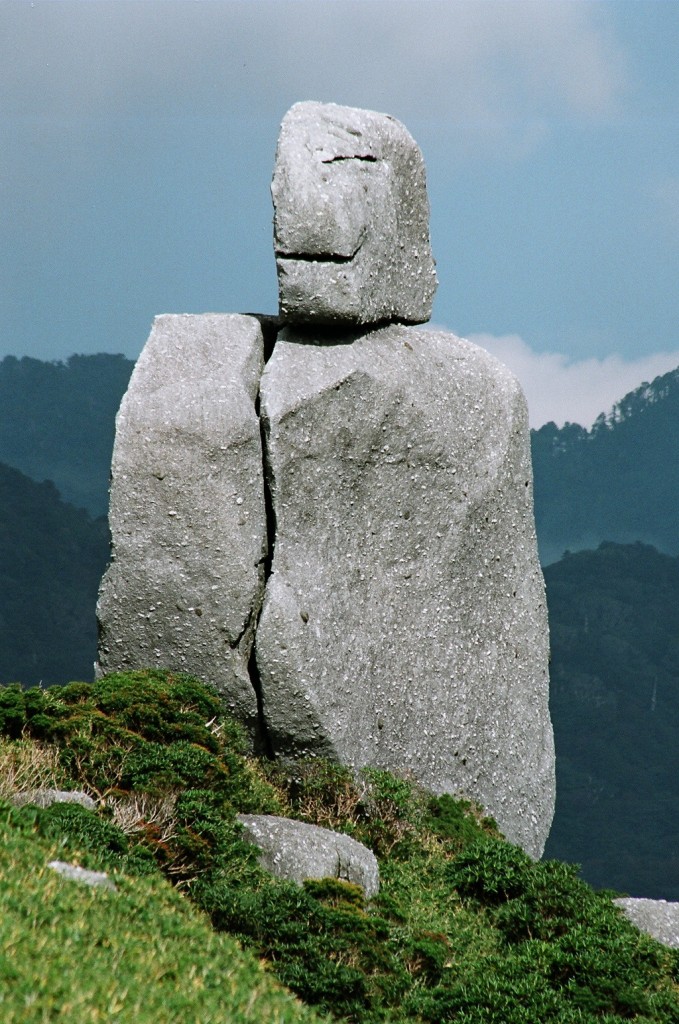
Yakushima Island (courtesy Yamaguchi)

Fantastic interview! I’ll be passing this link around.
“I sense the clock is ticking madly past the 11th hour, so it is my hope to continue connecting people to the sacred world of ancient Japan which I believe holds vital keys to our survival.” Agreed totally!
Great articles on the power stones John. How do we find out more about the ‘power spot’ tours that Kara is planning? They sound fantastic. There is definitely a strong ‘otherness’ about the Japanese landscape. As a fellow Australian it would also be great to discuss with Kara our mutual interests in the Shinto spirit and Aboriginal cultures in Australia.
Thanks for the response. I thought this item might win interest as it’s an exciting field as yet undeveloped in English-language terms. Kara Yamaguchi can be contacted at kara_y12[at]hotmail.com.
Thanks for the contact information John. Kara certainly appears to be undertaking some ground-breaking work on power stones in Japan (a subject I have only just become familiar with through your blog). Another landscape where sacred stones are important of course is South America. The most well known artisans in stone are the Inka whose legacy is truly amazing. Any one who has visited sites in the Sacred Valley and beyond will attest to that. Other cultures in South America also worked in stone but are less well known in the west. Tours for foreigners are relatively common in South America although power stones could still do with more attention in English-language terms. It will be great if Kara and others can raise the profile of these sites in Japan so that they are at least as well known as the Inka!
It’s marvellous to see from the article and the following comments fellow Australians sharing of few their thoughts about the essential commonality in spiritual and philosophical ideas of the Aboriginal Australia and Shinto. I feel Shinto has a wonderful potential to help people adjust their perspective in a country like Australia, Interesting article!
Thanks for that, David. There are a couple of regular Australian contributors, so I know there is a fair bit of interest in Shinto ‘down under’…